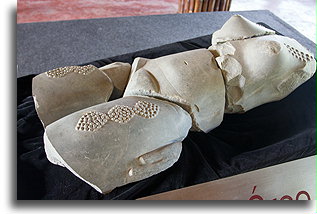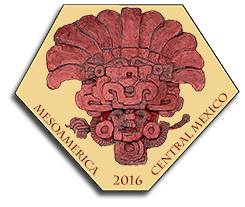Northern tip of Mesoamerica
November 13
The goal of this expedition was to learn about pre-Columbian America. At a distance of about 1000 km from the US border, we reached the northernmost part of Mesoamerica, the region characterized by stone structures. People called Huasteca inhabit that area. While seeking for archeological sides we reached the little known location called Tamuin. It was a ritual place with a large raised platform containing several altars, one of them phallic-shaped. For Huastecas this was a representation of fertility and we can imagine that this is how that altar was dedicated. Several murals covering this altar can be seen. This is a series of images depicting important people with rich vestments.




Other important Huasteca archeological site called Tamtoc located is just a few kilometers from Tamuin. Interesting here is a large central square, which was probably a civic and administrative center. It contains five platforms and many other surrounding structures. Only a small part of the ancient city was actually excavated. Based on the archeological evidence we know today that this was a well-organized society based on agriculture. They inhabited the area between 600 BC and AD 1350. The most distinguished characteristic of this site is feminism. Many stone monuments portrays women; most of human remains found there are female.


Some of monuments found in Tamtoc are unique in its form within Mesoamerica. The one known as “The Ruler” is the lower part of a male sculpture. This monument possibly represents an important personage; perhaps a ruler of Tamtoc, since the position of his hand seems to be designed to carry a baton of command. His nakedness and abnormal size of his genitals has been interpreted as an expression of the importance of fertility among these peoples and the cult of the phallus.




The monument known as “The Priestess” is a big, weighing more than 30 tones monolith showing three female figures, two of them without head. It is interpreted as lunar calendar, dating probably from between 1150 and 700 BC.

Another unusual sculpture has a meaningful name, “Venus of Tamtoc.” She was found in Conjunto Norte section in 2005. It is probably 2.500 years old and lay in the water for at least 2,000 years. There is no other so old and so rich in details sculpture in Mesoamerica. It can compete with works of art of Ancient Greece. The fact that it represents female, suggests important role of women in the social, political and religious life of Huastecas. The Venus of Tamtoc has scars as high-relief tattoos on chest and thighs. The number of dots is not random. They indicate the 52 years cycle of the common in Mesoamerica calendar, as well as the 104-year Lunar and Solar cycle.









